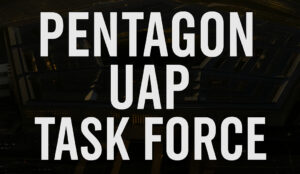A newly declassified CIA briefing titled "New Book on Nuclear Submarines" provides a detailed, candid evaluation of Soviet nuclear submarine development through the Cold War, offering rare insight into how U.S. intelligence assessed the ambitions, weaknesses, and transformation of the Soviet Navy’s undersea forces.
Drawing from a Soviet-published naval book (circulated internally and never intended for Western eyes), the report breaks down the Soviet Navy’s journey from coastal defense to global nuclear reach, and how it attempted to counter the technological superiority of U.S. submarines through sheer volume, design evolution, and doctrine shift.
"This book demonstrates the importance the Soviets attach to their submarine force."
🧪 From Experiment to Arsenal
The early Soviet nuclear submarines, based on converted WWII designs, were technically flawed, noisy, and limited in endurance.
But quantity compensated for quality.
Within a decade, the USSR launched:
-
The Hotel-class, its first nuclear-powered ballistic missile submarine (SSBN)
-
The November-class attack submarines (SSN), fast but acoustically vulnerable
-
A robust support infrastructure, including training centers and specialized shipyards
Despite early setbacks-including several deadly accidents-the Soviet fleet grew rapidly, propelled by state emphasis on matching and eventually deterring U.S. naval dominance.
"Technical problems were numerous but did not slow production."
🚀 Missile Boats for Second Strike
As the Cold War escalated, Soviet submarines began to evolve from conventional attack roles to strategic nuclear deterrence.
New classes of submarines such as the Yankee, Delta, and Typhoon were armed with intercontinental ballistic missiles (ICBMs) and capable of:
-
Patrolling near U.S. coasts
-
Launching from under the Arctic ice
-
Remaining submerged for months with nuclear propulsion
The Typhoon-class in particular-heavily featured in the Soviet book-represented a symbol of pride and paranoia: enormous, double-hulled, and meant to survive a first strike and retaliate.
"These submarines are central to Soviet second-strike strategy."
🧭 Red Navy Goes Global
By the late 1970s, the Soviet Navy wasn’t just defensive.
It had transformed into a blue-water force, capable of global presence and projection.
Nuclear subs began operating in:
-
The Atlantic and Pacific Oceans
-
Near U.S. carrier battle groups
-
Along NATO shipping lanes
The CIA briefing notes that Soviet strategic planners began referring to submarines as "the most survivable leg of the nuclear triad," moving beyond coastal patrol toward true power projection.
"Deployment patterns show the Soviet Navy seeking global strategic balance."
🔊 Noise Problems and U.S. Advantage
Despite their numbers and reach, Soviet submarines lagged in one crucial area: stealth.
The CIA observed that even in newer classes, acoustic signatures remained high, making them easier to track and neutralize by advanced U.S. sonar systems.
This allowed American SSNs to trail Soviet boomers, reducing their first-strike credibility.
But Soviet efforts to close the noise gap were ongoing-through research in propeller design, hull coatings, and quieting technologies.
"Their improvements are uneven, but the trend is clear: they are learning."
🏗️ A Doctrine of Resilience
The document emphasizes that the Soviet submarine program wasn’t simply reactionary-it was doctrinally central.
The Navy was given substantial autonomy, funding, and prestige.
Submarine captains were trained in strategic independence, often operating far from command with standing orders to strike if communications failed.
The emphasis was on survivability, mobility, and psychological deterrence-an underwater force designed to ensure that even after a devastating first strike, retaliation was guaranteed.
"Submarines were the last sword left in the scabbard."
🧾 Cold War Beneath the Waves
This CIA assessment shows that the Soviets poured enormous resources into building a submarine force capable of surviving, striking, and shaping geopolitics-even if it couldn’t outmatch U.S. tech head-to-head.
The oceans, quiet and vast, became the most survivable battlefield of the nuclear age.
And Soviet planners knew it.






